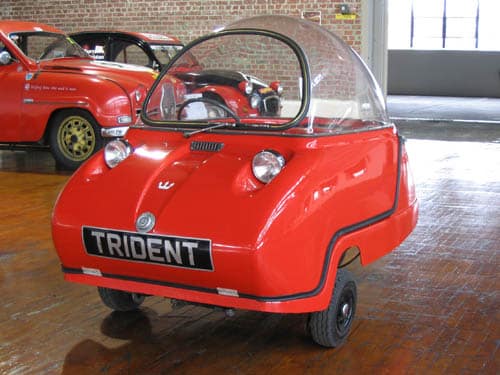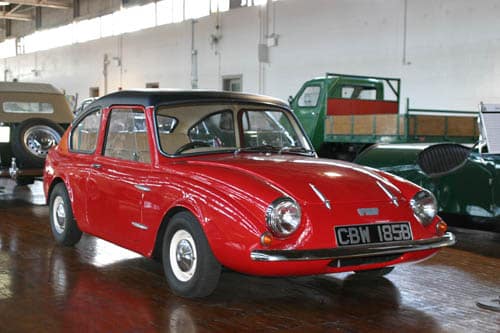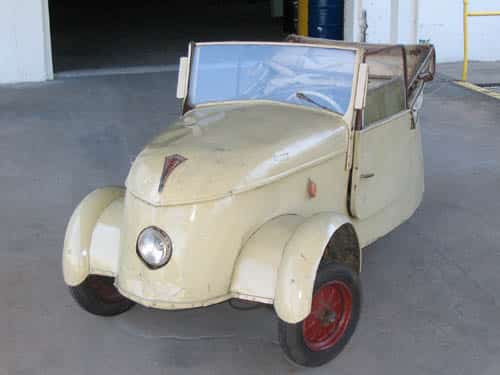Peel Trident- 1965
Peel Engineering holds a unique place in automotive history for producing the world’s smallest car (P-50) and the world’s smallest 2-seater car (the Trident). The Peel Trident was an evolution of the P-50. It was made slightly larger to accommodate two modest-size adults. The Peel Trident is not very roomy, and when two people sit […]
Peel Trident- 1965 Read More »









